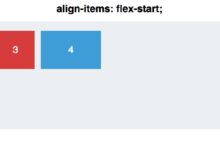Appraisal Based Real Estate Index: 7 Powerful Insights You Must Know
Ever wondered how real estate markets are truly valued beyond just listing prices? The appraisal based real estate index offers a deeper, more accurate picture of property value trends by relying on professional appraisals rather than transaction data alone. It’s a game-changer for investors, policymakers, and analysts alike.
What Is an Appraisal Based Real Estate Index?

An appraisal based real estate index is a specialized tool used to track changes in property values over time by analyzing data derived from professional real estate appraisals. Unlike transaction-based indices that rely solely on sale prices, this index uses appraised values—assessments conducted by licensed professionals who evaluate a property’s worth based on condition, location, comparable sales, and market trends.
How It Differs from Transaction-Based Indices
Transaction-based indices, such as the Case-Shiller Index, are built on actual sale prices of homes. While useful, they can be skewed by seasonal fluctuations, one-time market shocks, or limited data in slow-moving markets. In contrast, an appraisal based real estate index provides a more stable and consistent measure because appraisals are conducted regardless of whether a property is sold.
- Appraisal data reflects intrinsic value, not just market demand.
- Less volatile due to smoothing effect of professional judgment.
- Covers non-transactional events like refinancing or estate planning.
The Role of Licensed Appraisers
At the heart of every appraisal based real estate index are certified real estate appraisers. These professionals follow strict guidelines, often set by organizations like the Appraisal Foundation, to ensure consistency and accuracy. Their evaluations consider factors such as square footage, neighborhood quality, recent renovations, and zoning regulations.
“Appraisals provide a standardized lens through which we can compare properties across time and geography—making them ideal for index construction.” — Dr. Elena Rodriguez, Urban Economics Researcher
Why the Appraisal Based Real Estate Index Matters
This index isn’t just another number—it’s a critical barometer for economic health, financial stability, and investment strategy. Because it reflects the underlying value of real estate rather than speculative buying patterns, it serves as a more reliable indicator during periods of market uncertainty.
Stability During Market Volatility
During economic downturns or housing bubbles, transaction volumes can plummet or surge unpredictably. An appraisal based real estate index remains more stable because appraisals continue even when homes aren’t selling. For example, during the 2008 financial crisis, many transaction-based indices showed sharp drops, while appraisal-based models revealed a more gradual decline, aligning better with long-term fundamentals.
- Reduces noise from panic selling or bidding wars.
- Provides early warning signs of overvaluation or undervaluation.
- Helps central banks and regulators assess systemic risk.
Use in Mortgage and Lending Decisions
Banks and mortgage lenders rely heavily on appraised values when approving loans. An appraisal based real estate index helps institutions monitor collateral value trends across regions. This is especially important for portfolio risk management and stress testing under regulatory frameworks like Basel III.
For instance, if the index shows declining values in a particular metro area, lenders may tighten credit standards or increase loan-to-value (LTV) ratios accordingly. This proactive approach reduces exposure to potential defaults.
How Appraisal Data Is Collected and Standardized
Creating a reliable appraisal based real estate index requires massive amounts of standardized data. Unlike sales data, which is often publicly recorded, appraisal reports are typically held by financial institutions, government agencies, or private appraisal firms. Aggregating this information involves overcoming significant logistical and privacy challenges.
Data Sources for Appraisal Indices
Key sources include:
- Fannie Mae and Freddie Mac: These government-sponsored enterprises (GSEs) collect millions of appraisal reports annually from mortgage applications. Their databases are among the largest in the U.S. Fannie Mae alone processes over 2 million appraisals per year.
- HUD and FHA: The U.S. Department of Housing and Urban Development uses appraisals for federally insured loans, providing data on lower-income and first-time buyer segments.
- Private Appraisal Management Companies (AMCs): Firms like CoreLogic and Collateral Analytics aggregate appraisal data from thousands of appraisers nationwide.
Standardization Challenges
One major hurdle is standardizing appraisal formats. Appraisers may use different forms (e.g., FNMA 1004, 2055), different methodologies, or varying levels of detail. To build a consistent index, data must be normalized using:
- Automated Valuation Models (AVMs) to extract key variables.
- Geocoding to align properties with census tracts or ZIP codes.
- Time-adjustment algorithms to account for when the appraisal was conducted.
Without rigorous standardization, the resulting index could misrepresent true market trends.
Methodologies Behind the Appraisal Based Real Estate Index
There is no single method for constructing an appraisal based real estate index. Different organizations use various statistical techniques to transform raw appraisal data into meaningful trend indicators. The choice of methodology significantly affects the index’s accuracy and interpretability.
Repeat Appraisal Method
Similar to the repeat sales method used in transaction indices, this approach tracks properties that have been appraised multiple times. By comparing the same property’s value at different points in time, analysts can isolate pure price changes from differences in property characteristics.
For example, if a home was appraised at $300,000 in 2020 and $330,000 in 2023, the 10% increase contributes directly to the index calculation. This method minimizes bias from changing property mixes but requires large datasets with sufficient repeat appraisals.
Hedonic Pricing Models
Hedonic models break down a property’s value into its component attributes—such as bedrooms, bathrooms, lot size, school district, and proximity to amenities. Each attribute is assigned a monetary value, and changes in these values over time are used to infer overall market trends.
When applied to appraisal data, hedonic models can control for quality differences between properties, making comparisons across time more accurate. This is particularly useful in heterogeneous markets where homes vary widely in size and condition.
Geospatial Weighting and Regional Aggregation
Real estate markets are highly localized. A national appraisal based real estate index must account for regional disparities by weighting data according to population, housing stock, or economic activity.
- Urban areas may be weighted more heavily due to higher transaction and appraisal volumes.
- Rural regions might be grouped into broader zones to ensure statistical reliability.
- Geospatial interpolation techniques can estimate values in areas with sparse appraisal coverage.
Organizations like the U.S. Census Bureau use similar methods in their housing surveys, ensuring geographic representativeness.
Advantages of Using an Appraisal Based Real Estate Index
The benefits of relying on appraisal data for real estate indices are numerous, especially when compared to traditional transaction-based approaches. These advantages make the appraisal based real estate index a preferred tool in certain analytical and policy contexts.
Broader Market Coverage
Not all homes sell every year—some stay in families for decades. However, many of these properties are still appraised during refinancing, insurance assessments, or estate settlements. This means an appraisal based real estate index captures a much larger segment of the housing stock than transaction-based indices, which only reflect active buyers and sellers.
- Includes owner-occupied homes that rarely change hands.
- Reflects value trends in stagnant or low-turnover markets.
- Provides insights into wealth accumulation over time.
Reduced Sensitivity to Market Extremes
Sales prices can be distorted by bidding wars, distressed sales, or investor speculation. Appraisals, by design, aim to reflect fair market value under normal conditions. This makes the appraisal based real estate index less prone to short-term anomalies.
For example, during the pandemic-driven housing boom of 2020–2021, some transaction indices showed double-digit annual growth. Appraisal-based models, however, indicated more moderate increases, suggesting that part of the surge was speculative rather than fundamental.
Usefulness for Long-Term Economic Analysis
Policymakers and economists use real estate indices to study wealth inequality, urban development, and monetary policy transmission. Because appraisals are less volatile and more comprehensive, they offer a clearer long-term view of housing wealth trends.
Central banks, such as the Federal Reserve, incorporate appraisal data into their financial stability reports to assess household balance sheets and potential risks in the mortgage market.
Limitations and Criticisms of the Appraisal Based Real Estate Index
Despite its strengths, the appraisal based real estate index is not without flaws. Critics point to several structural and practical limitations that can affect its reliability and timeliness.
Lag in Data Availability
Appraisal reports are often not immediately available for public or analytical use. They may be held by lenders for months before being released or aggregated. This creates a time lag that can make the index less useful for real-time decision-making.
- Typical delay: 3–6 months from appraisal date to index inclusion.
- Lags reduce usefulness for tracking sudden market shifts.
- Contrast with transaction indices, which can be updated monthly.
Potential for Appraiser Bias
While appraisers are trained to be objective, human judgment is inherently subjective. Studies have shown that appraisals can be influenced by:
- Client pressure (e.g., lenders wanting higher collateral values).
- Racial or socioeconomic biases in neighborhood assessments.
- Overreliance on outdated comparables.
A 2022 Brookings Institution report found that homes in majority-Black neighborhoods were systematically undervalued by an average of 23% compared to similar homes in white neighborhoods—a bias that would distort any appraisal-based index.
Lack of Transparency and Accessibility
Unlike public property records, appraisal data is often proprietary. This limits independent verification and academic research. Only a few institutions—like Fannie Mae and Freddie Mac—have the scale and access to build comprehensive indices.
As a result, the methodology behind many appraisal indices remains opaque, raising concerns about accountability and reproducibility.
Real-World Applications and Case Studies
The appraisal based real estate index isn’t just theoretical—it’s used in real-world scenarios by governments, financial institutions, and researchers. Let’s explore some concrete examples of how this index shapes decisions and policies.
Federal Reserve’s Use in Financial Stability Monitoring
The Federal Reserve uses appraisal data to monitor housing market health and assess risks to the broader economy. In its semiannual Financial Stability Report, the Fed references appraisal-based metrics to evaluate whether home prices are aligned with fundamentals like income and rent growth.
During the 2022–2023 interest rate hikes, the Fed noted that while transaction prices were cooling, appraisal values remained relatively firm—suggesting that the market was not in freefall but adjusting gradually.
Insurance Industry Risk Modeling
Homeowners’ insurance companies use appraisal based real estate index data to estimate replacement costs and set premiums. If the index shows rising construction costs or increasing home values in a region, insurers may adjust their pricing models accordingly.
For example, after Hurricane Ian in 2022, insurers in Southwest Florida used appraisal trends to reassess risk exposure and revise underwriting guidelines for coastal properties.
Academic Research on Wealth Inequality
Researchers at MIT and Stanford have used appraisal data to study intergenerational wealth transfer and racial disparities in housing appreciation. By tracking appraised values of inherited properties versus newly purchased ones, they’ve shown that families in historically redlined areas have seen significantly slower wealth accumulation.
These findings, published in journals like American Economic Review, highlight the social implications of how we measure and index real estate value.
Future of the Appraisal Based Real Estate Index
As technology evolves, so too does the potential for more accurate, timely, and inclusive appraisal based real estate index systems. Innovations in data collection, artificial intelligence, and regulatory oversight are shaping the next generation of real estate valuation tools.
Integration with Automated Valuation Models (AVMs)
AVMs use machine learning to predict property values based on vast datasets, including appraisal records. When combined with human appraisals, AVMs can enhance the speed and consistency of index construction.
Fannie Mae’s Collateral Underwriter tool already uses AVMs to flag outlier appraisals, improving data quality before inclusion in indices. As AI improves, we may see hybrid models where appraisals are validated and adjusted in real time.
Blockchain and Transparent Appraisal Records
Blockchain technology offers a way to create immutable, transparent records of appraisals. If adopted widely, it could solve the current problem of data silos and delays.
- Each appraisal could be timestamped and stored on a decentralized ledger.
- Access could be granted to authorized parties (lenders, regulators, researchers).
- Reduces fraud and duplication.
Pilot programs in countries like Estonia and Singapore are already testing blockchain-based property registries, which could eventually integrate appraisal data.
Regulatory Push for Fairer Appraisals
In response to documented biases, U.S. regulators are pushing for reforms. The Consumer Financial Protection Bureau (CFPB) has launched initiatives to increase diversity in the appraisal profession and standardize evaluation criteria.
These efforts aim to make the appraisal based real estate index more equitable and representative, ensuring that all communities are fairly valued.
What is an appraisal based real estate index?
An appraisal based real estate index is a statistical measure that tracks changes in property values over time using data from professional real estate appraisals rather than actual sale prices. It provides a more stable and comprehensive view of housing market trends, especially in areas with low transaction volume.
How does it differ from the Case-Shiller Index?
The Case-Shiller Index is transaction-based, meaning it only includes homes that have been sold. In contrast, an appraisal based real estate index includes properties that have been appraised for refinancing, insurance, or estate purposes, even if they haven’t been sold. This gives it broader coverage and less volatility.
Why are appraisals sometimes biased?
Appraisals can be influenced by unconscious bias, lack of local knowledge, or pressure from clients (like lenders). Studies show homes in minority neighborhoods are often undervalued. Efforts are underway to improve appraiser training, increase diversity, and use technology to reduce subjectivity.
Can appraisal data predict market crashes?
While no index can perfectly predict crashes, an appraisal based real estate index can provide early warning signs. Because appraisals reflect intrinsic value, a sustained decline in appraisal values—while sale prices remain high—may indicate a bubble. This was observed in the lead-up to the 2008 crisis.
Where can I access appraisal based real estate index data?
Publicly available data is limited, but some sources include Fannie Mae’s economic research reports, the Federal Reserve’s financial stability publications, and academic studies using GSE data. Private firms like CoreLogic also offer subscription-based indices derived from appraisal data.
The appraisal based real estate index is more than just a number—it’s a powerful lens into the true value of real estate. By relying on professional appraisals, it offers a stable, comprehensive, and less speculative view of housing markets compared to transaction-based indices. While challenges like data lags and potential bias remain, ongoing technological and regulatory advancements are making these indices more accurate and equitable. For investors, policymakers, and researchers, understanding and utilizing the appraisal based real estate index is key to making informed, long-term decisions in an ever-changing market.
Further Reading:




